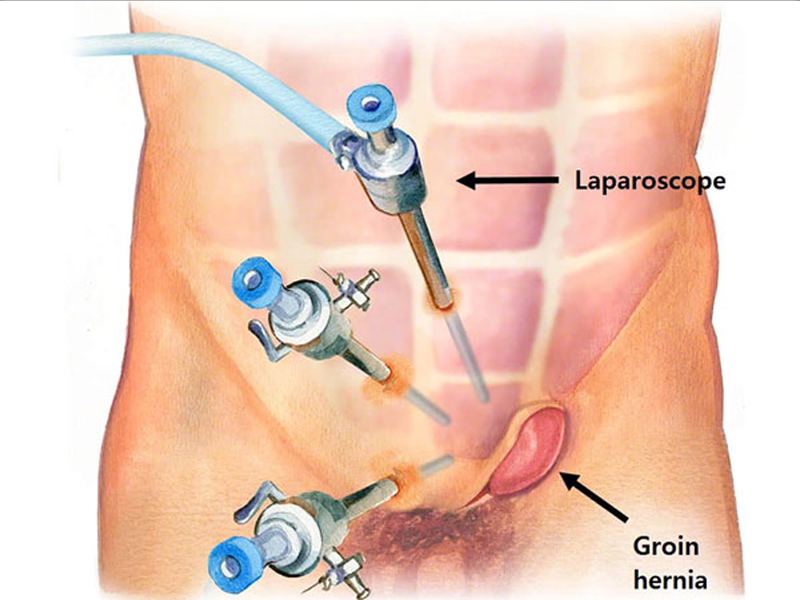Treatment
Laparoscopic Hernia Surgery

A hernia occurs when fatty tissue or an organ pushes through a weak place in the surrounding connective tissue or muscle wall. Hernias usually don't get better on their own. They tend to get bigger. In rare cases, they can lead to life-threatening complications. That's why doctors often often recommend surgery. But not every hernia needs immediate treatment. It depends on the size and symptoms. A surgical hernia repair involves pushing the bulge back inside the body part that should contain it, and keeping it there.
Laparoscopic surgery
In this surgery, your abdomen is inflated with a harmless gas. This gives the surgeon a
better look of your organs. He'll make a few small incisions (cuts) near the hernia.
He'll insert a thin tube with a tiny camera on the end (laparoscope). The surgeon uses
images from the laparoscope as a guide to repair the hernia with mesh. For laparoscopic
surgery, you'll receive general anesthesia.
Recovery is usually faster with laparoscopic surgery: On average, patients are back to
their normal routine a week sooner than with open surgery.
What kind of surgery you'll need often depends on the size, type, and location of your
hernia. Your doctor will also consider your lifestyle, health, and age.
